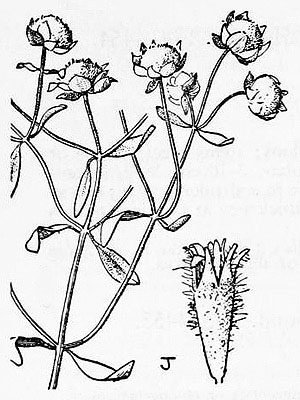Kahili Phyllostegia (Phyllostegia kahiliensis)
The island of Kaua’i harbors seven Phyllostegia species, of which five are endangered to critically endangered, some of these species have populations of less then 10 individuals making them very vulnerable to the slightest disturbances like grazing by cattle etc.. [2]
***
The Kahili Phyllostegia was described in 1987, the species is known from three collections (1974, 1983, and 1987) that originally were thought to be identical with Heller’s Phyllostegia (Phyllostegia helleri Sherff), but differ from that species by their retrorsely appressed pubescence.
The species had an extremely narrow geographic range, it was restricted to steep jagged ridges and precipitous side slopes just below the summit of Mt. Kahili on the island of Kaua’i, Hawaiian Islands.
The Kahili Phyllostegia was declared extinct in 2014, yet there is a slight chance that it might be rediscovered someday in one of the steep ravines of Mt. Kahili. [1][2]
*********************
References:
[1] Warren L. Wagner: Nomenclator and review of Phyllostegia (Lamiaceae). Novon 9(2): 265-279. 1999
[2] Kenneth R. Wood: Delissea rhytidosperma H. Mann (Campanulaceae) and Phyllostegia kahiliensis H. St. John (Lamiaceae) possibly extinct on Kaua’i, Hawaiian Islands. Records of the Hawaii Biological Survey for 2014. Part I: Articles. Edited by Neal L. Evenhuis & Scott E. Miller. Bishop Museum Occasional Papers 116: 31-33. 2015
*********************
edited: 24.09.2019



